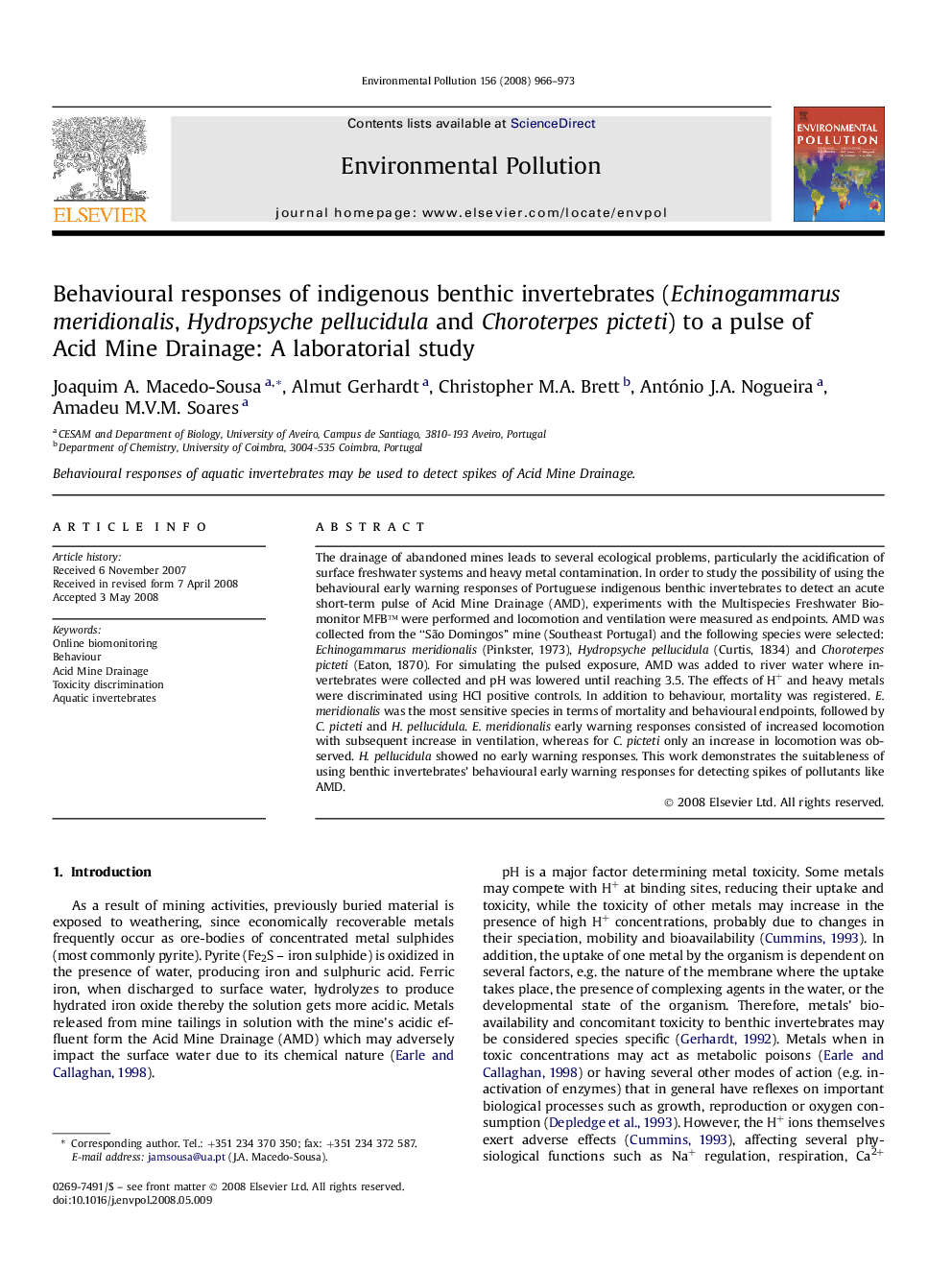| Article ID | Journal | Published Year | Pages | File Type |
|---|---|---|---|---|
| 4426235 | Environmental Pollution | 2008 | 8 Pages |
The drainage of abandoned mines leads to several ecological problems, particularly the acidification of surface freshwater systems and heavy metal contamination. In order to study the possibility of using the behavioural early warning responses of Portuguese indigenous benthic invertebrates to detect an acute short-term pulse of Acid Mine Drainage (AMD), experiments with the Multispecies Freshwater Biomonitor MFB™ were performed and locomotion and ventilation were measured as endpoints. AMD was collected from the “São Domingos” mine (Southeast Portugal) and the following species were selected: Echinogammarus meridionalis (Pinkster, 1973), Hydropsyche pellucidula (Curtis, 1834) and Choroterpes picteti (Eaton, 1870). For simulating the pulsed exposure, AMD was added to river water where invertebrates were collected and pH was lowered until reaching 3.5. The effects of H+ and heavy metals were discriminated using HCl positive controls. In addition to behaviour, mortality was registered. E. meridionalis was the most sensitive species in terms of mortality and behavioural endpoints, followed by C. picteti and H. pellucidula. E. meridionalis early warning responses consisted of increased locomotion with subsequent increase in ventilation, whereas for C. picteti only an increase in locomotion was observed. H. pellucidula showed no early warning responses. This work demonstrates the suitableness of using benthic invertebrates' behavioural early warning responses for detecting spikes of pollutants like AMD.
